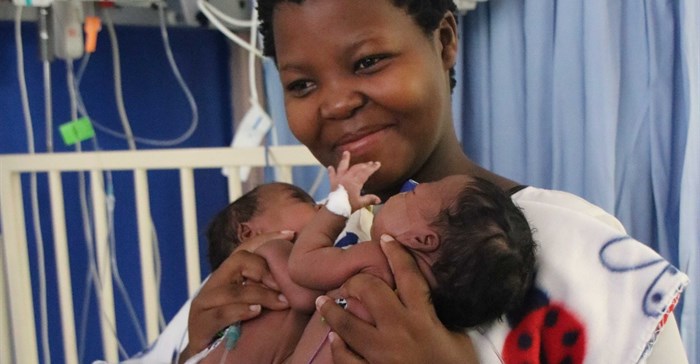Speaking ahead of the procedure, paediatric surgeons Dr Mariza de Villiers and Dr Paul Stevens agreed that the twins had a good prognosis. “This type of conjoined twins is known as omphalopagus twins, which means do not share a heart,” they noted.
“Pre-operative assessments indicated that the babies also did not share any other vital organs. This considerably improved their chances of surviving the surgical separation and will also contribute greatly to them leading healthy lives going forward,” said De Villiers.

She added the operation was made easier because they were only joined by a bridge of skin. “There is sufficient skin to close the resultant surgical wound on each baby without the need for plastic surgery.”
There are always considerable risks when separating conjoined twins, but we have been cautiously optimistic all along that the operation would have a good outcome for both twins,” she observed.
The girls, Uwenzile and Uyihlelile Shilongonyane, were born on 2 January, weighing a total of 4,21kgs, to Bongekile Simelane and her husband Mbongeni Sihlongonyane from Big Bend, Swaziland.
According to Stevens one of the main challenges the surgical team anticipated ahead of the procedure, related to the anaesthesia. “The twins were conjoined in such a way that they are facing each other. Intubation for such tiny babies is delicate enough, but as their faces are so close to one another and they are not able to be placed on their backs to be intubated for anaesthesia, this was a great deal more complicated than usual.”
As a result, four anaesthetists participated in the procedure, with each twin being cared for by two anaesthetists for the duration of the surgery. The doctors worked in two distinct teams, identified by their pink and purple surgical scrub caps.
The all-female team of anaesthetists consisted of Dr Henrika Rossouw, Dr Sandra Spijkerman, Dr Marleen Odendaal and Dr Jeanri Smith. The little patients were matched to their team by wearing corresponding colours and were connected to their own, colour-coded anaesthetic machine.
The initial stage of the procedure, dedicated to getting the anaesthetic just right for the surgery, took more than three hours, which meant that it took almost half of the total theatre time.